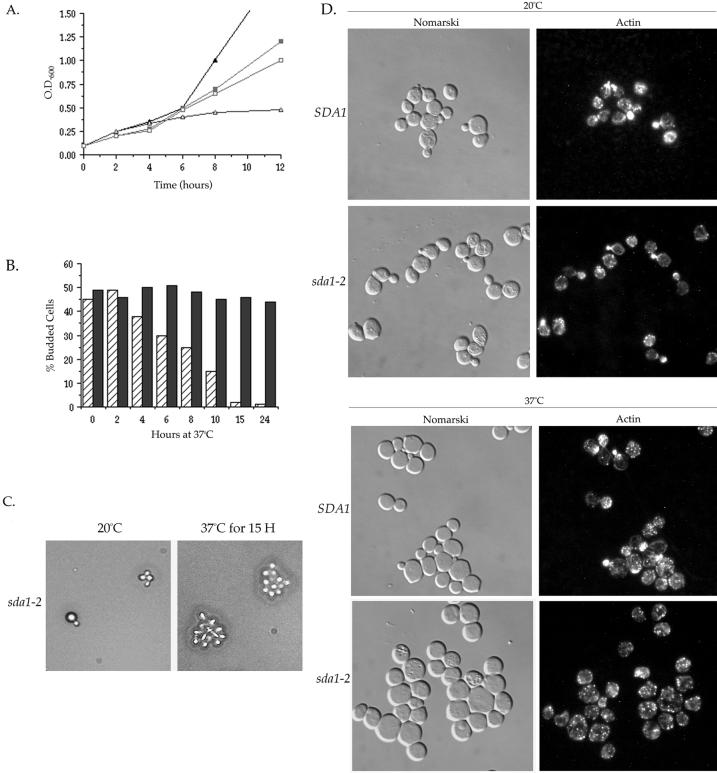Figure 5.
Rapidly growing sda1-2 cells arrest in G1 when shifted to the restrictive temperature. Wild-type and sda1-2 cells were grown to log phase and then either maintained at the permissive temperature (20°C) or shifted to the restrictive temperature (37°C). (A) Cell proliferation was monitored by measuring the O.D.600 of the culture over a period of 12 h. At the permissive temperature, wild-type (▪) and sda1-2 cells (□) proliferate at nearly the same rates. At the restrictive temperature, sda1-2 cells (▵) proliferate at the same rate as wild-type (▴) for the first 6 h, but then gradually slow down and cease growing at ∼10 h. (B) Wild-type (solid bars) and sda1–2 cells (hatched bars) were grown to log phase at the permissive temperature, shifted to the restrictive temperature, and the percentage of cells with buds was monitored over a period of 24 h. (C) Rapidly growing sda1-2 cells were plated onto solid media at the restrictive temperature (37°C) for 15 h to determine the number of cell divisions that sda1-2 cells undergo before arresting. (D) Nomarski images and actin staining of wild-type and sda1-2 cells grown to log phase at the permissive temperature, or 15 h after shifting rapidly growing cells from the permissive temperature to the restrictive temperature.

